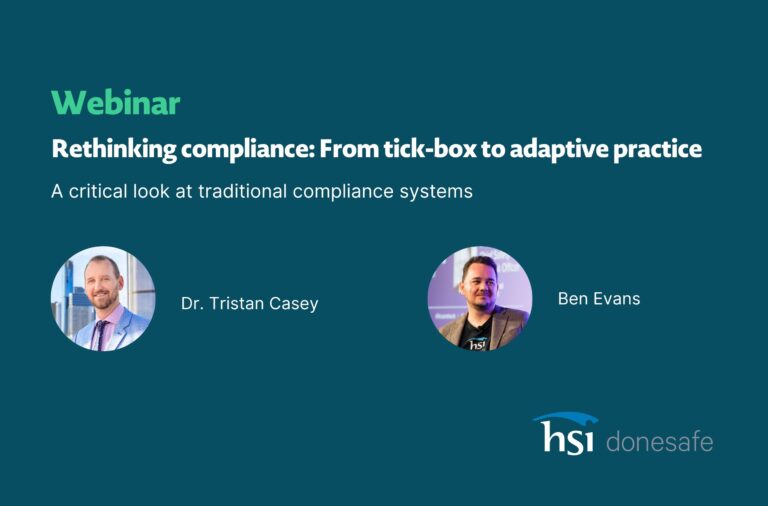
If you’re involved in safety, operations, or management, you understand that Environmental, Health, and Safety (EHS) isn’t just about compliance—it’s a key financial factor. Ineffective EHS practices lead to hefty costs that go beyond direct expenses, impacting on your company’s reputation, employee turnover, and productivity.
The good news? Investing in a robust EHS program can transform these challenges into opportunities. Let’s explore how a strong EHS program can not only save you money but also open doors to new revenue streams.
The Hidden Costs of Poor EHS Practices
You might be surprised to learn how much poor EHS practices can cost. According to the 2024 Global EHS Readiness Report, companies with lower EHS maturity levels spend up to 30% more on incident-related expenses compared to those with advanced EHS systems.
When considering the financial impact of poor EHS practices, remember to account for ALL costs:
- Direct costs: These include fines for non-compliance, medical expenses, and compensation for workplace injuries, and
- Indirect costs: These can be more elusive but just as damaging—think of reputation damage, high employee turnover, and decreased productivity.
Recognising and addressing these costs is crucial. Investing in effective EHS programs can help you avoid them and build a more resilient business.
Maximizing Savings Through Strategic EHS Implementation
Think EHS is only about compliance? Think again.
Somewhat surprisingly, some organizations still view EHS as a thing they have to do for compliance. For those that see EHS as a strategic necessity, EHS programs not only ensures safety but also strengthens your business and saves you money.
By focusing on what matters most—getting everyone home safely—you can make a real impact to your workforce and your organizations performance through:
- Reduced incidents: A strong EHS program, including regular risk assessments, helps identify and mitigate potential hazards before they lead to incidents. The 2024 Global EHS Readiness Report highlights that companies with advanced EHS systems saw a 50% reduction in costs related to workplace injuries and illnesses. For example, a report shows companies implementing EHS management systems can reduce costs related to injuries and illnesses by up to 40%, often saving $3 or more for every dollar invested.
- Streamline compliance: Integrating EHS compliance into your daily operations doesn’t just keep you on the right side of the law; it cuts down on administrative time and insurance costs, ensuring smoother workflows.
- Increased efficiency and productivity: By centralizing EHS data and processes, your organization can make decisions faster and respond to issues more swiftly. For example, automated reporting frees up valuable time for your employees to focus on more important tasks. As familiarity with EHS tools has grown from 20% in 2020 to 31% in 2023 (Asis, 2024), it’s clear that technology can make everyone’s jobs easier.
Recent insights from ASIS reveal that 83% of employees are eager to explore and use new safety technologies. This statistic underscores a significant shift in the workplace—while organizations may sometimes resist change due to concerns about cost, complexity, or disruption, the workforce is actively seeking it. Employees are increasingly aware of the benefits that innovative safety solutions can bring, not just in terms of personal well-being but also in enhancing overall job satisfaction and workplace culture.
This growing acceptance among employees does more than just reduce incidents and associated costs; it accelerates the effectiveness and adoption of EHS programs across the board. When your team on the ground is eager to embrace new tools and technologies, the implementation process becomes smoother, and the results are far more impactful. With a well-implemented EHS program and a workforce ready for change, you don’t just achieve compliance and increase efficiency—you turn every improvement into a powerful competitive advantage. This synergy between your team’s readiness and your organization’s strategy can be the game-changer in overcoming resistance to change and driving long-term success.
Driving Revenue Through EHS Excellence
Optimizing EHS sets you up for growth.
When you focus on excellent EHS practices, you’re not just protecting your team—you’re also making your business money. In the article “Making ‘Cents’ of Workplace Safety Programs”, EHS Today, discusses how EHS programs can drive ROI. Here’s how strong EHS practices drive profitability:
- Enhance your reputation: Superior EHS practices enhance your company’s reputation, drawing in clients and customers who value safety and sustainability. This not only boosts your market share but also opens doors to new business opportunities.
- Attract and retain top talent: A strong safety culture makes your company more appealing to potential employees and helps keep current staff engaged and productive, reducing turnover and boosting long-term profitability.
- Spark innovation: Efforts to improve safety and sustainability lead to new, safer processes and technologies. For example, developing eco-friendly materials in response to environmental standards can open new customer segments and revenue streams.
While effective EHS programs can deliver significant financial benefits, many organizations face challenges in managing them effectively. Fortunately, modern EHS solutions simplify achieving these advantages, making success more attainable for you.
Investing in workplace safety is not just the right thing to do; it’s a smart business move. It cuts costs and delivers tangible financial benefits.
How HSI Donesafe Can Transform Your EHS Outcomes
In EHS management, each decision directly impacts your bottom line. HSI Donesafe can help you transform your EHS framework into a powerful driver of financial growth and sustainability. Discover how we make this a reality:
- Strategic integration: HSI Donesafe’s Cloud-Based EHS & ESG Software integrates EHS compliance into your business operations, reducing compliance activities, cutting costs, and increasing efficiency.
- Customized learning: Our tailored safety training programs equip your workforce with the knowledge they need, enhancing safety and boosting your bottom line.
- Operational efficiency: Automating routine EHS tasks frees up resources, allowing you to focus on core business activities. Our centralized data management system empowers quick, informed decision-making.
Investing in a comprehensive EHS program with HSI Donesafe is more than just ticking the compliance box—it’s a strategic choice that delivers real financial benefits. Companies leveraging advanced EHS systems have seen up to a 40% reduction in costs related to workplace injuries and illnesses, achieving a remarkable ROI of at least 300%. The substantial financial benefits far outweigh the initial investment (which, thanks to HSI Donesafe’s SaaS system, is less than you might think).
This doesn’t just mean fewer incidents; it’s also about smoother operations, quicker compliance, and a more engaged, productive workforce. Strong EHS practices enhance your company’s reputation, attract top talent, and open up new revenue streams.
It’s clear—effective EHS isn’t just about keeping people safe; it’s a smart, profitable business move.
Ready to improve your EHS outcomes and drive your business forward? Our solutions streamline safety and risk management, transforming EHS into a powerful competitive advantage. Let’s make a real impact—talk to us today.
———————————————————————————————————————————————————–
Looking to optimize your EHS software adoption and management? Check out the resources below:
- Explore practical solutions and get expert advice to overcome challenges with EHS Program adoption.
- Learn essential and effective strategies for maintaining Workplace Compliance.
Want to invest in your EHS program? Reach out today.
Share:



